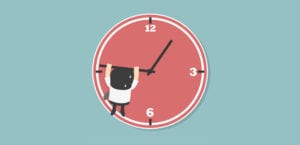
Guide to Better Slider Placement
It might seem like a silly detail to focus on, but putting your slider in the proper place is more important than you might think. If you’re a photographer, perhaps you want a hand-picked slideshow of your work to be the first thing someone sees — but maybe your Instagram feed is better suited elsewhere?
Placement can affect who sees your slider, whether or not they click any links on it, and even if they decide to stay on your website at all. If you need guidance on the best areas to place certain sliders, you’ve come to the right place.
Where Can You Put a Slider?
The answer is dependant on how creative you’re willing to be, and what you intend to use the slider for. If you’re not sure yet, that’s okay too. You might get a few ideas while reading this.
As WordPress does not support slider functionality by default, you’ll need to install a plugin like Soliloquy.
Homepage
It goes without saying that the sliders on your homepage inform visitors about the purpose of your website. Especially if your slider is at the top, as it will be the first thing people see. Make sure it leaves a good impression.
For instance, a photographer could pick some of their best work to display. You could also create a welcome slideshow, or provide other information.
Just make sure that all sliders on the homepage are relevant. Don’t just put down a slider full of images you didn’t take! They may look pretty, but a visitor’s first glimpse of your website should make its purpose clear. If it’s irrelevant to the site’s theme, don’t put it on the homepage.
Sidebar, Header, and Footer
Content in the sidebar is very important, even if it doesn’t end up on the site itself. You can use a sidebar slider to offer helpful information, such as your WordPress or social media posts, without interrupting the flow of your pages. Some sidebars follow as you scroll, and hang around on most pages, so it’s a great place to put featured or recent posts.
A slider in the header should have a similar function to a slider on the homepage. You can offer information, a welcome message, and so forth. It should be relevant to the page it’s on since it will be both the most prominent element and the very first thing anyone sees.
Don’t underestimate the use of a footer slider, either. It’s a good idea to put content there that you feel is less important, but you still want visitors to know about. Social media, miscellaneous photography, graphics linking to resources, and similar things will all work here.
Individual Pages and Posts
There are tons of ways to put your slider directly in a page or post. Use it to showcase art or photography, or as an animated thumbnail for categories. Put one with the latest posts below your articles to make sure everyone stays updated. Make a site navigation slider. Create a portfolio page. The possibilities are endless.
Putting Your Sliders to Better Use
Slider positioning is very important; you want them to reach the right audience and have the proper impact. If you run a blog, it may be important to you to have the most recent posts front and center. Or perhaps you’d rather have them in a sidebar, where they can be reached easily from any page on the site. Whatever kind of website you’re creating, hopefully, this guide helps you decide how to use and where to place your sliders.
What have you found to be optimal positioning for sliders? Feel free to share your tips and suggestions below. And, as always, connect with us on Twitter and Facebook for even more tutorials.
SaveSave

![nb_bsp_1[2] - Soliloquy Soliloquy slider placement](https://soliloquywp.com/wp-content/uploads/2018/03/nb_bsp_12.jpg)
![nb_bsp_2[1] - Soliloquy Soliloquy blog](https://soliloquywp.com/wp-content/uploads/2018/03/nb_bsp_21.jpg)
![nb_bsp_3[1] - Soliloquy content slider configuration](https://soliloquywp.com/wp-content/uploads/2018/03/nb_bsp_31.jpg)





